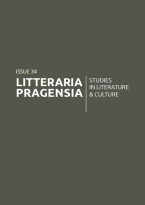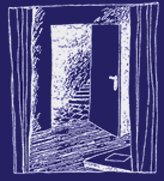
|
17.34 Ghosts, Spirits, SpectresEdited by: Martin Procházka Volume: 17 Issue: 34 December 2007 |
Contents
|
Martin Procházka
Ghosts, Spirits, Spectres: Introduction
|
1 |
|
Aleida Assmann
Ghosts of the Past
show abstract
Spirits and ghosts, if considered along the lines
of the definitions in this article, show a close similarity to two forms
of remembering: conscious recall on the one hand, and non-conscious,
involuntary and even counter-voluntary summons on the other. Using this as
a point of departure the article examines more closely the connection
between spirits, ghosts and memory together with its contexts, media
and mechanisms. The second part focuses on photography as a carrier
of an unknown, uncanny, traumatic past that confronts the present with
something that refuses to simply vanish or disappear. Photographs may
present the challenge of a counter-memory and offer the chance for
time-travelling and an encounter with the ghosts of the past.
|
5 |
|
Helena Znojemská
Medieval English Soul and Body Literature
show abstract
The article offers a comparative reading of a
sample of English medieval texts employing the motif of a postmortem encounter
of soul and body. The analysis of four Old English prosaic, homiletic
adaptations of the Soul's Address, two extant versions of the Soul and Body poem
and two of the earliest debate poems concentrates on the way in which these
texts negotiate two disparate impulses: to use the motif as a memento mori exemplum
and as a venue for a discussion and resolution of the mutual relationship of
soul and body and their responsibility for sin. Special attention is devoted
the Exeter Book Soul and Body, which can be perceived as thematizing the
problems inherent in the homiletic treatments of the Soul's Address by
confronting the materiality of the dead body with its function in the soul's
speech as a largely abstract repository of guilt and terror. The debates are
interpreted as offering a paradoxical closure of the irresolution of the
earlier texts by allowing the body a say within the space delimited by the
basic characteristics of the genre, which presents two extreme positions to
obliquely settle the point of dispute midway between them.
|
20 |
|
Michael C. Frank
Photographing Ghosts: Ancestral Reproduction and Daguerreotypic Mimesis in Nathaniel Hawthorne's The House of the Seven Gables
show abstract
The years following the introduction of the
daguerreotype in 1839 saw the emergence of two alternative discourses on
photography: on the one hand, "photorealism," which equated daguerreotypy with
a faithful mimesis of the visible and emphasized its unprecedented capacity for
representing surface detail; on the other hand, the lesser-known
"photo-fantastic." While the latter did not deny the new medium's great mimetic
potential, it redefined that potential as the power of making visible the
unseen. One of the most interesting examples is Nathaniel Hawthorne's 1851
romance The House of the Seven Gables. Connecting daguerreotypy with
mesmerism - another form of arcane knowledge recently imported to the US from
France -, Hawthorne fictionalizes photographic representation as a modern form
of magic, able to reveal hidden aspects of reality. The daguerreotypes described in the novel give insight into the secret
character of the person photographed, showing the charismatic Judge Pyncheon to
be the modern-day equivalent of his ruthless seventeenth-century ancestor
Colonel Pyncheon, and thus eventually provide a means to exorcize the ghosts of
the past.
|
40 |
|
Martin Procházka
Monuments or Trash? Ghost Towns in American History and Culture
show abstract
The article discusses
American ghost towns as signs of the failure of the U.S. discourse of the "end
of history" (America as the endpoint of Western civilization) and subjects of
alternative, anecdotal ‘histories' (tall tales). As cultural objects, they have
an unstable status, oscillating between monuments of the heroic past and
chaotic places full of junk and trash, which, however, gets further transformed
into objects valued by collectors. As a result, American ghost towns are part
of a process of economic, aesthetic, as well as fetishistic transformations,
which Stephen Greenblatt called "the circulation of social energy." While their
‘spectrality' (the semblance of the presence of life), is often connected with
desire and nostalgia it may also evoke the demise of civilization and the
meaningless repetition of history. This feature is also typical of
representation of ghost towns in recent American literature (Robert Coover's
novel Ghost Town), which also point
out some more general structural features - ghost town history as a "play of
substitutions" (Derrida) - and the symbolic link between ghost towns and the
present uprooted, migratory way of life.
|
58 |
|
Louis Armand
The Theatre of Alibis
show abstract
This article addresses the question of ethical action in Hamlet by way of an examination of Sartre's notion of the "guilty conscience" and non-transcendence of the ego, and Freud's analogy between Hamlet, Oedipus and the hysterical symptom. The focus of the article is upon a structural recursion in Shakespeare's text, according to which the venue of the ‘theatre' assumes a metaphorical function as a type of agency in the play. The metaphor extends to Freud's rendering of Hamlet as an authorless text: a text, ostensibly, that writes itself - or else, a textual apparatus or mechanism. In this way, Freud's reading of Hamlet becomes in turn a symptom of an ‘hysterical' mis-reading - and this then has implications for an understanding of the possibility of ethical ‘action' and for the significance of "conscience." |
77 |
|
Erik S. Roraback
A Chiasmus of Baroque Forms of Existence, Community, and Spectrality: Benjamin-Debord
show abstract
That Walter Benjamin (1892-1940) and Guy Debord
(1931-94) share distinctive qualities that endow both personas and their
respective bodies of compositional work the stamp of a twentieth-century
Baroque aesthetics within the literary and theoretical arts constitutes the
basic thesis of the present article. The line of argumentation supports the
cultural notion that in a criss-cross, trans-temporal arrangement of a
spectralized reappearance of the Baroque in Benjamin and in Debord, both
personages and corpuses of writings tap into notions concerning forms of
existence, of community and of spectrality for a contemporaneity still to see
itself in such chiasmatic structures dating back to the classical Baroque
period of the seventeenth century. The article also attempts to elucidate the
true stakes in the question about the role of spirits, of specters and of
ghosts in the production of possible, and of desirable, kinds of existence and
of community, in the wake of the birthing of the modern world that was the
early capitalist and Baroque seventeenth century.
|
101 |
|
Pavel Černovský
The Figure of the Spectre in John Barth's "Dunyazadiad"
show abstract
The analysis of the spectre in John Barth's short
story "Dunyazadiad" distinguishes between what the spectre does in the story
and what the figure of the spectre does in the text. Drawn from the traditional
imagery of spectres and ghosts, the figure remains essentially alien to the
story itself which, however, is strongly informed by the structural
(traditional) requirements of the figure of the spectre. Most significantly
this shows with respect to the creative crisis mentioned at the beginning of
the story, a crisis which both prompts the apparition and, as shown in the
essay, the figure of the spectre is designed to mute. As a result, the figure
of the spectre in this particular story displays strongly conservative
features, linked to a desire to maintain a certain fiction and thus to avoid a
radically different set of language operations that are implied in the nature
of the crisis as described in the story. Thus, under the postmodern playfulness
of the text there seems to be a struggle between accepting the implications of
a crisis and a desire to maintain a less problematic approach to writing.
|
119 |
|
Randolph Starn
History Without Periods: Deliverance and Dilemma
show abstract
This paper examines the status of historical
periods as organizing principles for historical discourse and as a target of
wide-ranging contemporary criticism for the "spurious unities" it imposes on
the past. Drawing on the author's experience as a Renaissance historian and a
founding member of the editorial board of the interdisciplinary journal Representations, the paper points to a
long history of rival periodizing claims, shows how period categories haunt
strategies for breaking away from them, and suggests the limits of rhetorical
analysis, a "periodological poetics," in avoiding the pitfalls of periodizing
history. The conclusion offers an argument for pragmatic but not at all
unprincipled forms of historical inquiry in which periods are neither absolute
nor dispensable among the associations that connect us with pasts, presents,
and one another.
|
131 |
|
Anna Grmelová
"About Suffering They Were Never Wrong, the Old Masters": An Intertextual Reading of Ian McEwan's Atonement
show abstract
The article argues that intertextual references are
employed in Atonement in order to
shape complex questions about moral responsibility for both personal and
collective pasts. Focusing mainly on the second part of the novel and its
covert intertextuality - W.H. Auden's poem "Musée des Beaux Arts" and
Breughel's "Icarus" - which reverberates throughout the text (the overt
references to Auden have already been noted by critics), the article contends
that, contrary to some critical claims, there is no dichotomy between the first
metafictional part of the novel and the second ‘realist' one. Both parts of the
novel are discursive.
|
153 |
|
Zdeněk Stříbrný
In Memoriam: Rudolph Everett Habenicht
|
158 |


